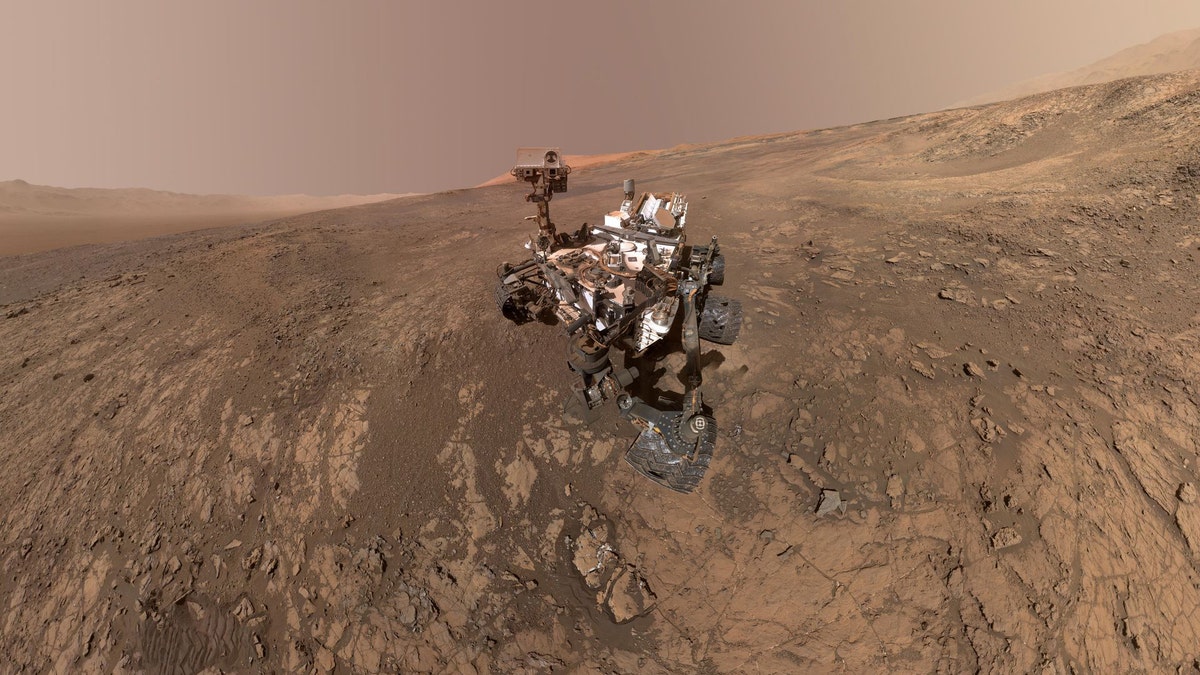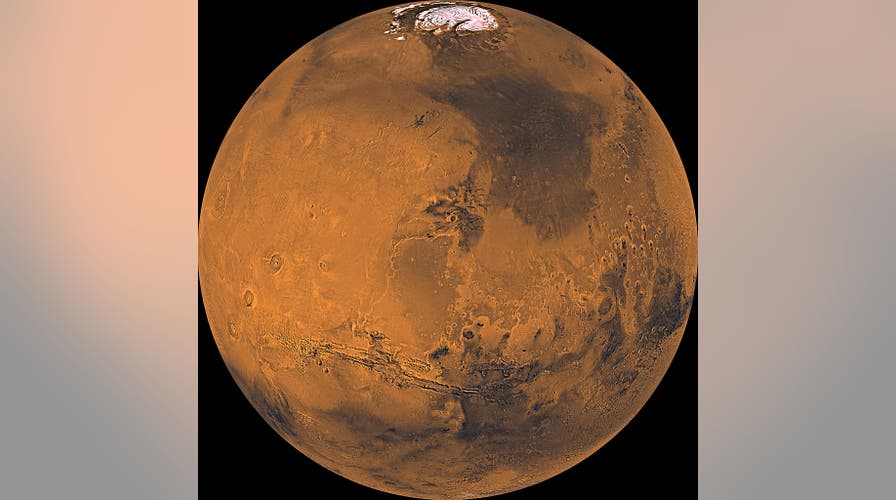Fox News Flash top headlines for August 13
Fox News Flash top headlines for August 13 are here. Check out what's clicking on Foxnews.com
A few months after detecting an "unusually high" level of methane on Mars, researchers have yet to figure out what's causing the spike. They have, however, ruled out one possibility and appear to be getting closer to answering whether life exists on other planets.
According to a study published in Scientific Reports, researchers from Newcastle University in the U.K. have ruled out that the spike could have been caused by wind erosion of rocks that had trapped the methane from fluid inclusions and fractures on the Red Planet's surface.
"The questions are -- where is this methane coming from, and is the source biological? That's a massive question and to get to the answer we need to rule out lots of other factors first," principal investigator Dr. Jon Telling said in a statement.

This self-portrait of NASA's Curiosity Mars rover shows the vehicle on Vera Rubin Ridge in Gale crater on Mars. North is on the left and west is on the right, with Gale crater's rim on the horizon of both edges. This mosaic was assembled from dozens of images taken by Curiosity's Mars Hands Lens Imager (MAHLI). They were all taken on Jan. 23, 2018, during Sol 1943. (Credit: NASA/JPL-Caltech/MSSS)
NASA'S CURIOSITY ROVER DETECTS 'UNUSUALLY HIGH' LEVEL OF METHANE ON MARS
On Earth, methane is produced both from biological and geological sources.
Telling added that over the last decade, winds on Mars have driven more sand movement than previously thought and that the erosions could be similar to those of sand dunes seen on Earth. Using the data they had, they found that wind erosion was not the source of the methane spikes and is coming from another source.
"What's important about this is that it strengthens the argument that the methane must be coming from a different source," Telling said. "Whether or not that's biological, we still don't know."
Methane was first detected in the Martian atmosphere in 2003, but the recent spike in levels discovered by NASA's Curiosity rover has perplexed researchers. In June, the space agency confirmed the rover measured the largest level of methane, 21 parts per billion units by volume, since landing on the Red Planet on Aug. 6, 2012.
The New York Times reported in June that sunlight and chemical reactions would break up any methane in Mars’ thin air “within a few centuries,” adding that the newly-detected spike was likely released recently.
The study's lead author, Dr. Emmal Safi, noted that although the new research is "just a little part of a much bigger story," he hopes it leads scientists to the answer of whether life exists on other planets.
"Ultimately, what we're trying to discover is if there's the possibility of life existing on planets other than our own, either living now or maybe life in the past that is now preserved as fossils or chemical signatures," Safi said.
MYSTERIOUS 'STAR TREK LOGO' SPOTTED ON MARS BY NASA
The Mars methane spike has surprised experts. Researchers used Curiosity’s onboard laboratory to “sniff” methane in the Martian atmosphere 12 times over a 20-month period that ended in 2014.
“During two of those months, in late 2013 and early 2014, four measurements averaged seven parts per billion,” said NASA in a 2014 statement. “Before and after that, readings averaged only one-tenth that level.”
Sudden spikes of methane also have been recorded, but scientists don’t know how long these “transient plumes” last or why they differ from seasonal patterns.
CLICK HERE TO GET THE FOX NEWS APP
Fox News' James Rogers contributed to this report




















